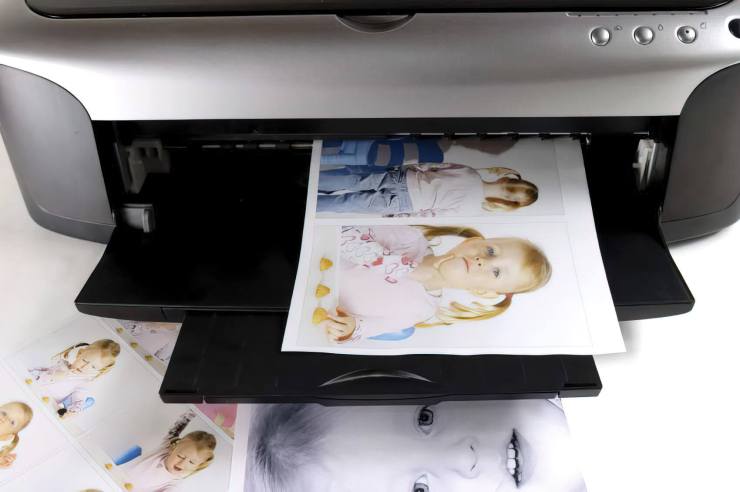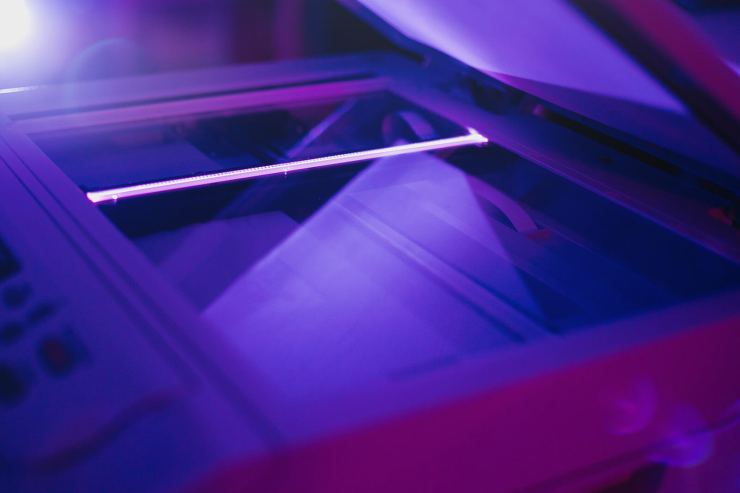OK, prepare to be temporarily confused (but not for long). A lot of terms are used to describe image resolution. The problem is that many people (and companies) use the wrong terms, which (understandably) leads to a great deal of confusion.
Let’s take a quick look at the most common terms and their accurate meanings. Knowing how to describe the resolution of images and output devices will help you make the right decisions when purchasing or choosing gear to use.
Dots per inch (dpi)

The most common term used to describe image resolution is dots per inch (dpi). Although you’ll hear it used for digital cameras and scanners, it is really only appropriate for printers. As a measurement of output resolution, dpi is fairly straightforward.
To determine dpi, it is necessary to count the number of dots that can fit in a 1″ × 1″ area. A higher dpi can mean smoother photographs or line art; for example, newspapers tend to use around 150 dpi, whereas magazines can use up to 600 dpi. Consumer printers easily print at 600 dpi or even higher, which can produce extremely good results (when using the right paper). An increase in dpi can produce even better-looking images. You’ll see (and hear about) dpi used a lot, but it solely refers to print and physical output.
Pixels per inch (ppi)
When you view your images on a computer monitor, you are seeing pixels displayed on your screen. Computer monitors use the concept of logical inches. Originally, the Mac OS most commonly used 72 pixels per inch (ppi) to match the concept of the printing idea of 72 points per real inch of paper. The Windows OS has traditionally used 96 ppi.
As computer monitors and portable devices have evolved, they’ve advanced to support variable resolution settings. As such, the actual ppi for a screen can vary greatly depending on the physical size of the screen and the resolution being used by the computer’s graphics card. For example, modern laptops often use resolutions between 100 ppi and 140 ppi, and devices like an iPhone can jump all the way up to 326 ppi to make images crisper on the small screen.
Worry less about the ratio of pixels per inch on your screen and simply accept that the standard measurement of resolution in Photoshop (and most computer programs) is ppi. When talking about displayed graphics, its ppi, not dpi.
Samples per inch (spi)

Although scanners are less common than they used to be, many professionals still use them to load sketches, photos, and original negatives. Manufacturers often tout the dpi capabilities of their scanner. This is inaccurate. Scanners don’t use dots, they use samples. A sample is when a scanner captures part of an image. Samples per inch (spi) is a measurement of how many samples are captured in the space of one inch. In general, an increase in sampling leads to a file that is truer to its analog original. However, there is a threshold: Once a certain amount of information is surpassed, human senses (and electronic output devices) cannot tell the difference.
Consumer-level scanners can capture optical resolution ranging between 300 spi and 4800 spi. Professional devices can capture significantly higher optical resolution. If you’re working with a large image, a lower number of samples is fine. If you’re enlarging a very small image, a large number of samples is crucial. More samples per inch translates into more information available as pixels, which can then be harnessed in output when they are converted to dots in the printer. So if your scanner’s software specifies dpi, it really means spi, but you can see how the two are closely related.
Lines per inch (lpi)
In professional printing environments, you’ll often hear the term lines per inch (lpi). This is from the traditional process where images with gradiated tones (such as photographs) are screened for printing to create a halftone. This was originally performed by laying film with dots printed on it over the film before exposure. In the digital age, this process and these terms are used less often, but it is still good for you to have a basic understanding.
These days, the work of converting an image to lines is performed by an imagesetter. The dots are arranged in lines, and the lpi measurement refers to the number of lines per inch. An increase in lpi results in smoother images. The below table shows the most common lpi settings for different output formats.
Output method
Screen printing
Laser printer (matte paper)
Laser printer (coated paper)
Newsprint
Offset printing (uncoated paper)
Offset printing (coated paper)
High-quality offset printing
Typical lpi
35–65
50–90
75–110
60–85
85–133
120–150+
150–300
Tell your story with the second annual Visual Storytelling Conference!
Experience four days of interactive, online training sessions featuring a range of educational content with experienced photographers and content creators. This free event kicks off with a series of technical boot camps to build essential skills, followed by live, online sessions on photography, video, business and social media. Join live from March 10-13, 2022!
